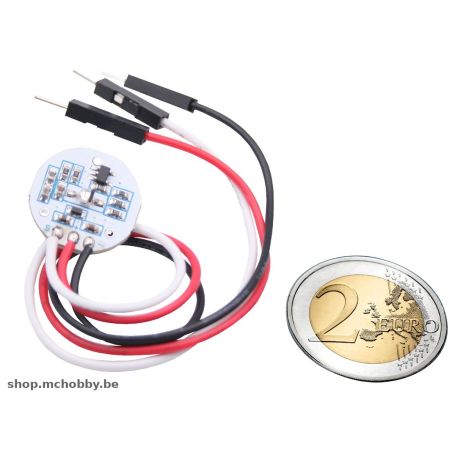Heart pulse sensor
Pulse rate sensor
- Diameter: 16mm
- Thickness: 3mm
- 3 to 5 Volts
- Analog output
Payments are secured by LyraCollect, a French payment collection company.
It is possible to delivered to your home, to a pick-up point or picked up by appointment at MCHobby
We prepare, pack and ship your orders with great respect and care.
Heart rate sensor - pulse sensor
A heart rate sensor ready for use for a project based on microcontroller in 3.3 or 5V logic.
This type of sensor is quite popular in the Arduino world and has a library called PulseSensor which measures different parameters.
How does it work?
It happens that the volume of blood in the veins changes regularly according to the pulses of the heart. By making a simple oximeter with an LED that illuminates the skin and a sensor that measures the light returned. By measuring changes in the absorption of light by the skin (and the underlying micro-vascular system), it becomes possible to detect changes in blood volume (which changes with heartbeat). Although these variations are small, they can be amplified and it then becomes possible to detect the heart rate by analyzing the result produced by the oximeter.
ee this article on the Photoplethysmogram (called PPG) on Wikipedia.
Technical details
- Diameter: 16mm
- Thickness: 3mm
- Power supply : 3 to 5 Volts
- Analog output
- @ 3.3V : output voltage is between 1.508 and 1.644V (Delta: 700mV)
- @ 5V : output voltage is is between 2.5 and 2.612V (Delta: 770mv)
- See the scope capture made here at MCHobby.
Tutorial
- PulseSensor library for Arduino (WorldFamousElectronic, GitHub, Anglais)
A collection of driver and example for the most popular pulse sensors. - Discover how the library does the work (PulseSensor.com, Anglais)








